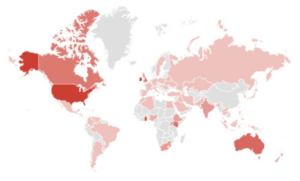Popularity Dynamics of Social and Affordable Housing: Ethics vs Business
Introduction:
On the one hand, rising housing prices, inflation, wage stagnation, demographic situation are only a few reasons for the negative impact on housing affordability in many European countries and generally in the world. On the other hand, declining public investment in affordable housing influences the level of housing affordability negatively too. Especially, since the global financial crisis of 2008, increasing numbers of low and middle-income households have been struggling to afford housing (The OECD Housing Project).
Literature Review:
The problem of social and affordable housing is not new in contemporary science. The first and foremost ethical and business aspects were the subject of many scholars’ attention. The relationship between ethics and economics is often debated. The main preconditions for the emergence of poverty and inequality in the distribution of housing among the population, the problem of increasing speculation in the real estate market, and the lack of an effective state housing policy were discussed too. In particular, Iglesias explored housing ethics that have historically shaped USA housing law and policy (housing as an economic good, housing as providing social order, etc.). The author argued that coexistence and pluralism among housing ethics were the norms. He examined the challenges and opportunities that housing ethic pluralism presented to the affordable housing movement.
Methodology and Research Methods:
Methodological tools of the research methods include logical generalization and scientific abstraction, statistical and structural analysis, comparative, and graphical analysis using the Excel software. The analytical analysis is realized based on Google Trends tools. The objects of research are the search requests about social, public, and affordable housing in the world in 2004-2021, and the certain indicators of social housing from the sample of OECD countries and other EU countries (limit in 2018 due to the availability of information on open information portals of The Organization for Economic Co-operation and Development).
Results:
Social housing is an important dimension of affordable housing provision and social welfare policy, representing more than 28 million dwellings and about 6% of the total housing stock, for example of OECD and non-OECD EU countries. However, there are significant differences from country to country in the definition, scope, size, type of provider of social housing, target population etc. For instance, social rental housing makes up less than 10% of the total dwelling stock in most OECD and EU countries, but more than 20% of the total stock in Denmark, Austria, and the Netherlands, where it represents the “third sector” in the housing market (OECD, Social housing, 2020).

The Visualization Map of Popularity Level of the Search Request about Affordable Housing in 2004-2021
Conclusions:
As a result of research, we proved the importance of improving housing policies and strategies with the accent on public and private partnership considering a strong necessity of affordable housing for a lot of people. We summed up and analyzed the theoretical approaches to the determination of concepts of “social housing”, “affordable housing”, and “public housing”, and identified key differences between these ones:
1) social and public housing mostly have similar meaning: social housing is public because it is financed or subsidized by public sector (state and local government, councils, non-profit organizations such as housing associations, etc.).
2) the concept of affordable housing is broader than the concept of social housing (the first one is open to a broader range of household incomes than the last one).
3) social housing is a residential rental accommodation while affordable housing refers to rental and owner-occupied dwellings.
4) affordable housing cover housing allowances, subsidies, tax relief to first-time homeowners etc., and it is managed more like a private rental property.
5) rents for affordable housing are usually calculated differently to social housing and there are different tenancy arrangements.
Also Read: Overcoming Restrictive Zoning for Affordable Housing in Five States
